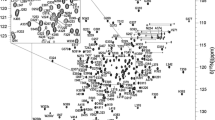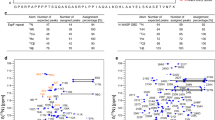Abstract
Once considered a relatively harmless bacterium, Clostridium difficile has become a major concern for healthcare facilities, now the most commonly reported hospital-acquired pathogen. C. difficile infection (CDI) is usually contracted when the normal gut microbiome is compromised by antibiotic therapy, allowing the opportunistic pathogen to grow and produce its toxins. The severity of infection ranges from watery diarrhea and abdominal cramping to pseudomembranous colitis, sepsis, or death. The past decade has seen a marked increase in the frequency and severity of CDI among industrialized nations owing directly to the emergence of a highly virulent C. difficile strain, NAP1. Along with the large Clostridial toxins expressed by non-epidemic strains, C. difficile NAP1 produces a binary toxin, C. difficile transferase (CDT). As the name suggests, CDT is a two-component toxin comprised of an ADP-ribosyltransferase (ART) component (CDTa) and a cell-binding/translocation component (CDTb) that function to destabilize the host cytoskeleton by covalent modification of actin monomers. Central to the mechanism of binary toxin-induced pathogenicity is the formation of CDTa/CDTb complexes at the cell surface. From the perspective of CDTa, this interaction is mediated by the N-terminal domain (residues 1–215) and is spatially and functionally independent of ART activity, which is located in the C-terminal domain (residues 216–420). Here we report the 1HN, 13C, and 15N backbone resonance assignments of a 221 amino acid, ~26 kDa N-terminal CDTb-interacting domain (CDTaBID) construct by heteronuclear NMR spectroscopy. These NMR assignments represent the first component coordination domain for a family of Clostridium or Bacillus species harboring ART activity. Our assignments lay the foundation for detailed solution state characterization of structure–function relationships, toxin complex formation, and NMR-based drug discovery efforts.


Similar content being viewed by others
References
Delaglio F, Grzesiek S, Vuister GW et al (1995) NMRPipe: a multidimensional spectral processing system based on UNIX pipes. J Biomol NMR 6:277–293
Gerding DN, Johnson S, Rupnik M, Aktories K (2014) Clostridium difficile binary toxin CDT: mechanism, epidemiology, and potential clinical importance. Gut Microbes 5:15–27. doi:10.4161/gmic.26854
Hyberts SG, Arthanari H, Wagner G (2012) Applications of non-uniform sampling and processing. Top Curr Chem 316:125–148. doi:10.1007/128_2011_187
Lessa FC, Mu Y, Bamberg WM et al (2015) Burden of Clostridium difficile infection in the United States. N Engl J Med 372:825–834. doi:10.1056/NEJMoa1408913
Perelle S, Gibert M, Bourlioux P et al (1997) Production of a complete binary toxin (actin-specific ADP-ribosyltransferase) by Clostridium difficile CD196. Infect Immun 65:1402–1407
Roth BM, Godoy-Ruiz R, Varney KM et al (2016) (1)H, (13)C, and (15)N resonance assignments of an enzymatically active domain from the catalytic component (CDTa, residues 216-420) of a binary toxin from Clostridium difficile. Biomol NMR Assign. doi:10.1007/s12104-016-9669-8
Sun S, Gill M, Li Y et al (2015) Efficient and generalized processing of multidimensional NUS NMR data: the NESTA algorithm and comparison of regularization terms. J Biomol NMR 62:105–117. doi:10.1007/s10858-015-9923-x
Vranken WF, Boucher W, Stevens TJ et al (2005) The CCPN data model for NMR spectroscopy: development of a software pipeline. Proteins 59:687–696. doi:10.1002/prot.20449
Wang S, Rustandi RR, Lancaster C et al (2015) Toxicity assessment of Clostridium difficile toxins in rodent models and protection of vaccination. Vaccine 34:1319–1323. doi:10.1016/j.vaccine.2015.11.026
Xie J, Horton M, Zorman J et al (2014) Development and optimization of a high-throughput assay to measure neutralizing antibodies against clostridium difficile binary toxin. Clin Vaccine Immunol 21:689–697. doi:10.1128/CVI.00038-14
Acknowledgments
This work is supported in part by the University of Maryland Baltimore, School of Pharmacy Mass Spectrometry Center (SOP1841-IQB2014) and shared instrumentation grants to the UMB NMR center from the National Institutes of Health [S10 RR10441, S10 RR15741, S10 RR16812, and S10 RR23447 (D.J.W.)] and from the National Science Foundation (DBI 1005795 to D.J.W.). This work was also supported via the Center for Biomolecular Therapeutics (CBT) at the University of Maryland.
Author information
Authors and Affiliations
Corresponding author
Ethics declarations
Conflict of interest
The authors declare that they have no conflict of interest.
Rights and permissions
About this article
Cite this article
Roth, B.M., Varney, K.M., Rustandi, R.R. et al. 1HN, 13C, and 15N resonance assignments of the CDTb-interacting domain (CDTaBID) from the Clostridium difficile binary toxin catalytic component (CDTa, residues 1–221). Biomol NMR Assign 10, 335–339 (2016). https://doi.org/10.1007/s12104-016-9695-6
Received:
Accepted:
Published:
Issue Date:
DOI: https://doi.org/10.1007/s12104-016-9695-6




